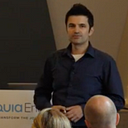How Microsoft is empowering technologists to drive sustainable transformation
Learn about the latest innovations from Microsoft that can help you measure and manage your environmental impact and comply with ESG regulations and standards
As a technologist, I am always looking for ways to leverage technology to create positive impact for the planet and the people. That’s why I am excited to share with you some of the latest innovations from Microsoft that can help us achieve our sustainability goals and comply with the regulations and standards that shape the ESG landscape.
One of these innovations is Microsoft Cloud for Sustainability, a solution that enables us to collect, process, and report ESG data in a transparent and consistent way, using a data model that follows the Greenhouse Gas Protocols. This solution also allows us to build a comprehensive ESG data estate, centralizing and transforming data from across business units and supply chains into a standard schema that’s ready for advanced analytics and reporting. This can help us address the challenges of data acquisition and identification, as well as the growing demand for reliable and comparable ESG information from investors, regulators, and other stakeholders. One of the features of Microsoft Cloud for Sustainability is Project ESG Lake (preview), which helps us to integrate data from various sources and formats into a common data model that supports ESG reporting and analysis.
Another innovation is Microsoft Fabric, a tool that enables us to analyze, define, train, score, and predict emissions using AI models and datasets. This tool can help us optimize our carbon footprint and align our activities with the goals of the Paris Agreement. Microsoft Fabric can also assist us in developing scenarios and strategies for climate-related risks and opportunities, as recommended by the Task Force on Climate-related Financial Disclosures (TCFD).
Microsoft is not only providing us with these solutions, but also leading by example and demonstrating its commitment to sustainability. Microsoft has set ambitious goals to fight climate change, such as becoming carbon negative by 2030 and removing all its carbon emissions since 1975 by 2050. It has also made efforts to decarbonize the power grids and increase the use of renewable energy. These goals and efforts reflect Microsoft’s recognition of the business opportunities and competitive advantages that come with embracing sustainability as a core value.
If you are interested in learning more about these innovations and how they can help you accelerate your sustainability progress and business growth, I recommend you to read this article, which is a valuable resource for technologists who want to stay updated on the latest trends and best practices in sustainability.
Sustainability is not only a moral duty, but also a strategic imperative for businesses and society. Technology can be a powerful enabler for sustainable transformation, but we need to use it wisely and responsibly. That’s why I urge you to join me in reading this article, which is a concrete action that you can take today to make a positive difference for the planet and the people.
